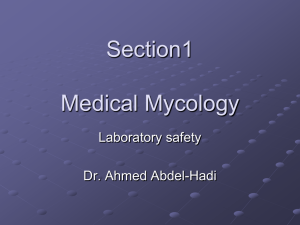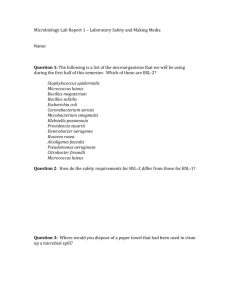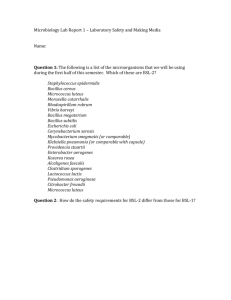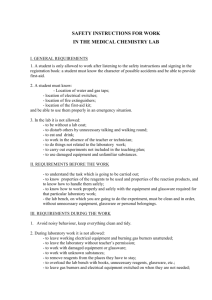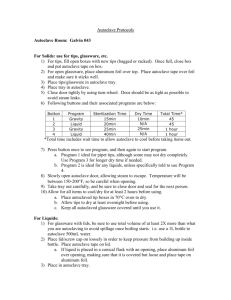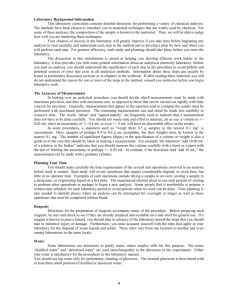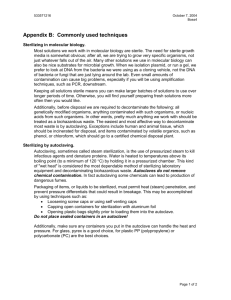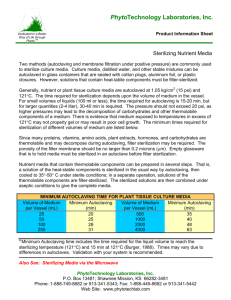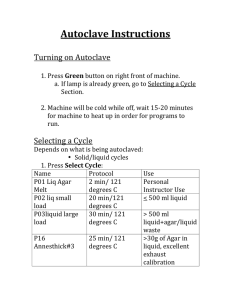Rules for Solutions
advertisement
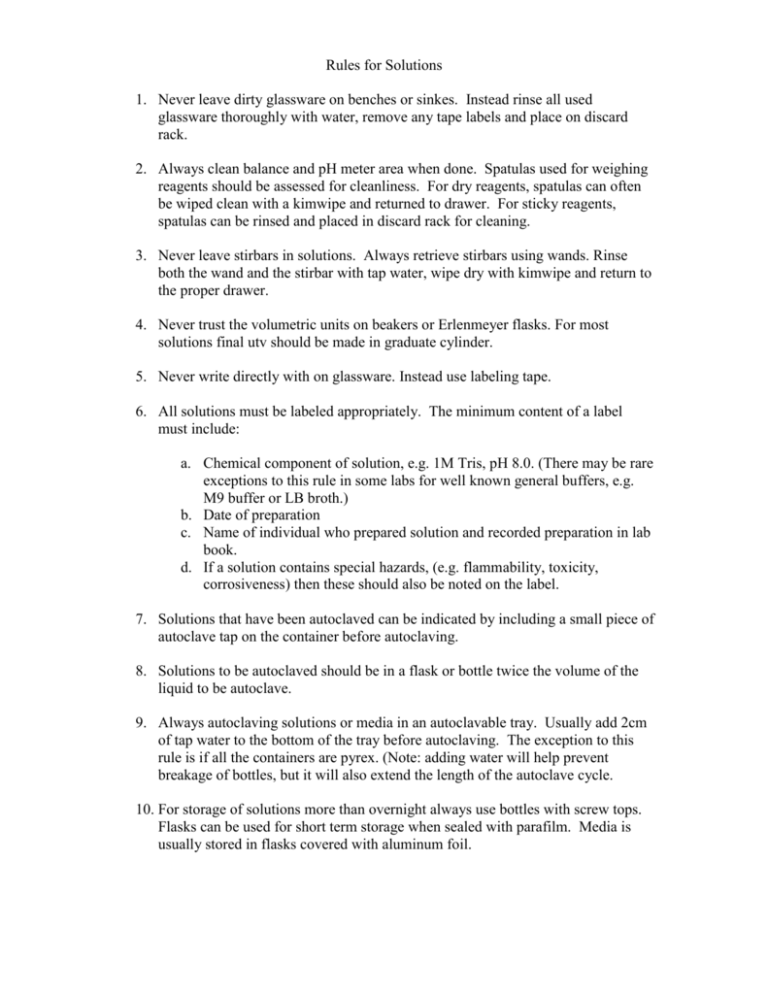
Rules for Solutions 1. Never leave dirty glassware on benches or sinkes. Instead rinse all used glassware thoroughly with water, remove any tape labels and place on discard rack. 2. Always clean balance and pH meter area when done. Spatulas used for weighing reagents should be assessed for cleanliness. For dry reagents, spatulas can often be wiped clean with a kimwipe and returned to drawer. For sticky reagents, spatulas can be rinsed and placed in discard rack for cleaning. 3. Never leave stirbars in solutions. Always retrieve stirbars using wands. Rinse both the wand and the stirbar with tap water, wipe dry with kimwipe and return to the proper drawer. 4. Never trust the volumetric units on beakers or Erlenmeyer flasks. For most solutions final utv should be made in graduate cylinder. 5. Never write directly with on glassware. Instead use labeling tape. 6. All solutions must be labeled appropriately. The minimum content of a label must include: a. Chemical component of solution, e.g. 1M Tris, pH 8.0. (There may be rare exceptions to this rule in some labs for well known general buffers, e.g. M9 buffer or LB broth.) b. Date of preparation c. Name of individual who prepared solution and recorded preparation in lab book. d. If a solution contains special hazards, (e.g. flammability, toxicity, corrosiveness) then these should also be noted on the label. 7. Solutions that have been autoclaved can be indicated by including a small piece of autoclave tap on the container before autoclaving. 8. Solutions to be autoclaved should be in a flask or bottle twice the volume of the liquid to be autoclave. 9. Always autoclaving solutions or media in an autoclavable tray. Usually add 2cm of tap water to the bottom of the tray before autoclaving. The exception to this rule is if all the containers are pyrex. (Note: adding water will help prevent breakage of bottles, but it will also extend the length of the autoclave cycle. 10. For storage of solutions more than overnight always use bottles with screw tops. Flasks can be used for short term storage when sealed with parafilm. Media is usually stored in flasks covered with aluminum foil. 11. To prepare solutions, start by using a beaker when mixing reagents or pHing. (This allows for easy access to the solution.) Use a graduated cylinder for final volumetric adjustment. Finally transfer to final container bottle. 12. For media, prepare in flask to be autoclaved. (Note: precise final volume for media is typically not as critical as for most solutions.) 13. Hint: When preparing plate media first dissolve all the dry reagents accept the agar in water. Only add the agar just before autoclaving. When plate media comes out of the autoclave, cool on stir plate. Be careful to stir at a moderately low speed so as not to introduce bubbles into the media. 14. It is especially important to rinse out flasks used to prepare plate media. Never pour concentrated agar or agarose solutions down the drain. They will solidified and clog the drain. Instead thoroughly dilute the agar solution, pour down drain while running hot water to rinse and dilute it.
